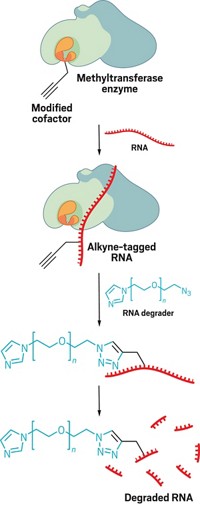Advertisement
Grab your lab coat. Let's get started
Welcome!
Welcome!
Create an account below to get 6 C&EN articles per month, receive newsletters and more - all free.
It seems this is your first time logging in online. Please enter the following information to continue.
As an ACS member you automatically get access to this site. All we need is few more details to create your reading experience.
Not you? Sign in with a different account.
Not you? Sign in with a different account.
ERROR 1
ERROR 1
ERROR 2
ERROR 2
ERROR 2
ERROR 2
ERROR 2
Password and Confirm password must match.
If you have an ACS member number, please enter it here so we can link this account to your membership. (optional)
ERROR 2
ACS values your privacy. By submitting your information, you are gaining access to C&EN and subscribing to our weekly newsletter. We use the information you provide to make your reading experience better, and we will never sell your data to third party members.
Synthesis
Drug Assembly On-Site
Drug Delivery: Click reaction links small molecules to form larger potential drug inside cells
by Stu Borman
August 28, 2014
| A version of this story appeared in
Volume 92, Issue 35

If a multicomponent bioactive agent is too big to slip into cells, it would be nice to get its components into cells first and then combine them on-site. That’s what Matthew D. Disney, Suzanne G. Rzuczek, and HaJeung Park at Scripps Research Institute Florida did with a potential myotonic dystrophy type 2 (DM2) treatment (Angew. Chem. 2014, DOI: 10.1002/ange.201406465).
DM2 is a rare condition characterized by muscle pain and weakness. It’s caused by a genetic defect that generates toxic RNA with a four-nucleotide repeat pattern.
Disney and coworkers earlier discovered a small molecule that improves DM2 symptoms by inhibiting the repeat sequence in cells. They wanted to boost its efficacy by linking a number of the molecules together. But the combination agent’s size limits its ability to enter cells.
The team therefore synthesized a version of the small molecule derivatized with azide and alkyne groups. The compound binds to the toxic RNA repeat sequence such that the azide and alkyne groups are close enough to react by Huisgen 1,3-dipolar cycloaddition, a form of click chemistry. The reaction combines the small-molecule units into oligomers that are more powerful inhibitors of RNA dysfunction than the individual molecules alone.
The reaction is bioorthogonal—it doesn’t disturb normal biological processes. It’s also selective in that it only occurs in cells containing the DM2 repeat sequence, which is required to catalyze it. The strategy also might lead to oligomer therapeutics for Lou Gehrig’s disease (amyotrophic lateral sclerosis), which is caused by a similar repeat defect.
“Bioorthogonal chemistry has mostly been used for the ex vivo modification of biomolecules or for detecting the presence of molecules in living systems,” comments M. G. Finn of Georgia Tech, an expert in the field. “It has always been a dream of this community to assemble functional molecules at the site of action. Disney and coworkers have done a delightful job of this. They chose the target and beautifully designed the approach for easy engineering of selectivity and efficacy. The functional outcome is undeniable and remarkably useful.”





Join the conversation
Contact the reporter
Submit a Letter to the Editor for publication
Engage with us on Twitter